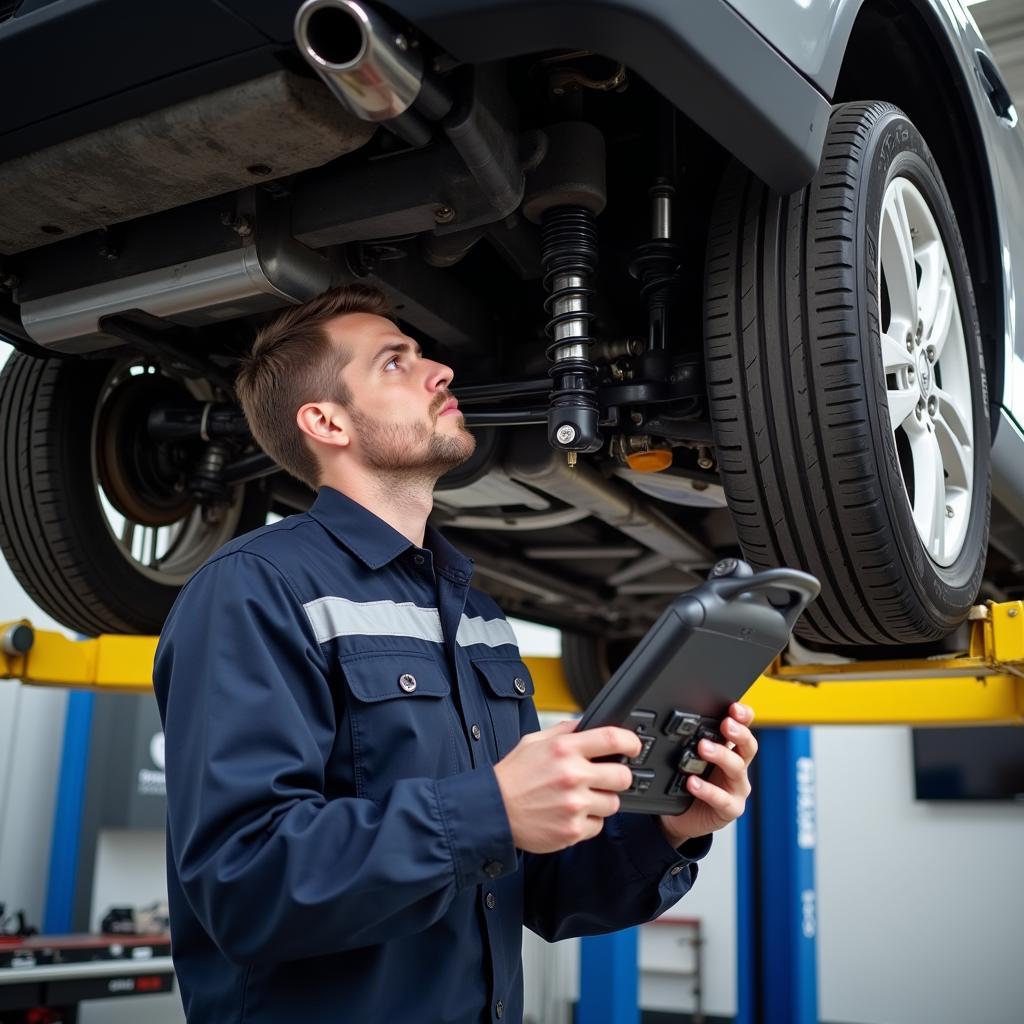When Car Warning Light Says Service Suspension System
When your car’s dashboard illuminates with the ominous “Service Suspension System” warning light, it’s a clear sign something isn’t right. This warning shouldn’t be ignored. Understanding what triggers this warning, its potential implications, and the necessary steps to take can save you from costly repairs and ensure your safety on the road. This article will delve into the intricacies of this warning light, offering practical advice and expert insights. You’ll learn what to expect when you take your car in for service and how to maintain your suspension system for optimal performance.
Decoding the “Service Suspension System” Warning Light
The “Service Suspension System” warning light is your car’s way of telling you there’s a problem with its suspension. This complex system, responsible for a smooth and controlled ride, comprises various components like shocks, struts, springs, and linkages. A fault in any of these parts can trigger the warning light. It’s crucial to address this issue promptly, as a malfunctioning suspension can significantly impact your car’s handling, braking, and overall safety. Understanding what is included in a service of a car can help you prepare for what to expect when your suspension needs attention.
Common Causes of the “Service Suspension System” Light
Several factors can activate the “Service Suspension System” light. These range from worn-out components to sensor malfunctions. Here’s a breakdown of the most common culprits:
- Worn Shocks or Struts: These components absorb bumps and vibrations, providing a comfortable ride. Over time, they wear out, leading to a bouncy ride and triggering the warning light.
- Leaking Struts or Shocks: Leaking fluid indicates a failing strut or shock, compromising the suspension’s ability to dampen vibrations.
- Damaged Springs: Broken or weakened springs can cause uneven ride height and affect handling, activating the warning light.
- Faulty Sensors: The suspension system relies on sensors to monitor its performance. A malfunctioning sensor can trigger the warning light even if there’s no mechanical issue.
- Wiring Problems: Damaged or corroded wiring can disrupt communication between the sensors and the car’s computer, leading to a false warning.
Knowing what do they check in a full car service is essential as many of these issues might be spotted during regular maintenance checks.
What to Do When the Light Comes On
When the “Service Suspension System” light illuminates, don’t panic. However, don’t ignore it either. Here are the steps you should take:
- Check your owner’s manual: It will offer specific advice for your car model.
- Inspect your tires: Look for uneven wear, which could indicate a suspension problem.
- Listen for unusual noises: Clunking or squeaking sounds can point to worn suspension components.
- Schedule a car service: A qualified mechanic can diagnose the problem and recommend the necessary repairs.
“Ignoring the service suspension system warning is like ignoring a ticking time bomb,” says automotive expert, Michael Stevenson. “Addressing the issue promptly can prevent further damage and ensure your safety on the road.”
 Mechanic Inspecting a Car's Suspension System
Mechanic Inspecting a Car's Suspension System
The Importance of Regular Maintenance
Regular car maintenance is crucial for preventing suspension problems. Keeping up with scheduled services can help identify potential issues before they escalate into major repairs. Understanding how often full car service is recommended can help you keep your suspension system in top condition.
“Preventive maintenance is always the best approach,” advises Susan Miller, a certified mechanic with over 20 years of experience. “Regular inspections can catch minor issues before they become major headaches and save you money in the long run.”
Costs Associated with Suspension Repairs
The cost of suspension repairs varies depending on the extent of the damage and the make and model of your car. Simple repairs like replacing a worn-out bushing can be relatively inexpensive, while more complex repairs like replacing struts or shocks can be significantly more costly.
Conclusion
The “Service Suspension System” warning light is a serious indicator of a potential problem with your car’s suspension. Addressing the issue promptly by seeking professional help can prevent further damage, ensure your safety, and save you money in the long run. Regular maintenance, as detailed in what is included in a mini cooper car service and when should i take my new car for service, can help keep your suspension system in optimal condition and prevent costly repairs down the line. Don’t ignore the warning – act now to ensure a smooth and safe ride.
FAQ
- What does the service suspension system light mean? It indicates a potential problem with your car’s suspension system, requiring immediate attention.
- Is it safe to drive with the service suspension system light on? While you might be able to drive for a short distance, it’s best to avoid driving until the issue is diagnosed and resolved.
- How much does it cost to fix a service suspension system warning? The cost varies depending on the problem, ranging from a few hundred dollars to over a thousand.
- Can I fix the suspension system myself? Unless you have advanced mechanical skills, it’s best to leave suspension repairs to a qualified mechanic.
- How can I prevent future suspension problems? Regular maintenance and inspections are crucial for preventing suspension issues.
- What are the signs of a bad suspension system? Bouncy ride, uneven tire wear, and unusual noises (clunking, squeaking) are common signs.
- How often should I get my suspension system checked? Consult your owner’s manual for recommended service intervals.
For any support, please contact us via WhatsApp: +1(641)206-8880, Email: [email protected] or visit us at 456 Oak Avenue, Miami, FL 33101, USA. Our customer service team is available 24/7.

